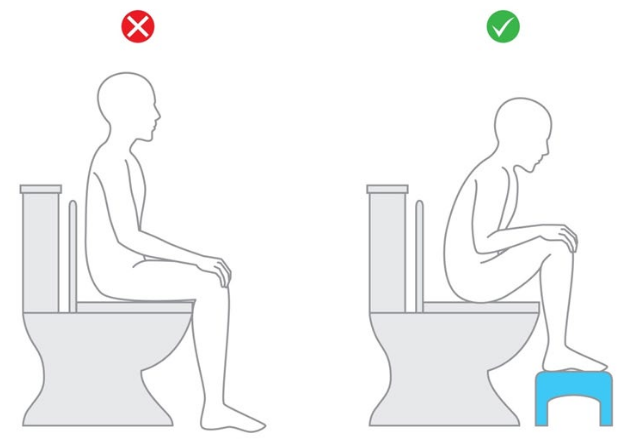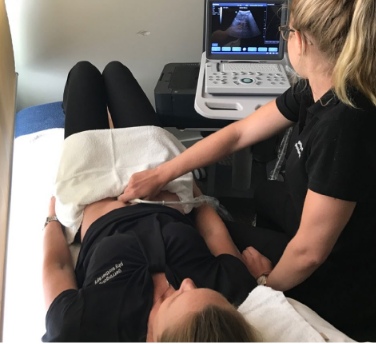Pelvic Health Physiotherapy During Pregnancy
Are you pregnant and want to look after your pelvic floor?
Do you want to exercise to maintain optimal health during pregnancy?
Do you want to look after your back and pelvis during pregnancy?
Pelvic Health Physiotherapy can help.

Healthy bladder and bowels
During pregnancy you will receive a lot of advice, but people may not talk to you about the bladder and bowel control problems that can occur before and after birth.
Your body goes through many changes when you are pregnant. Pregnancy and birth significantly increase the risk of bladder and bowel problems.
Common symptoms of bladder or bowel-control problems include:
Leaking urine when you laugh, cough, sneeze, lift and exercise
Leaking stool or wind from your bowel
Feeling an urgent need to rush to the toilet to empty your bladder or bowel
Having difficulty emptying your bladder and bowel
Another problem that can occur because of pregnancy is pelvic organ prolapse. Symptoms of pelvic organ prolapse may be a feeling of dragging or heaviness in your pelvic region, or a lump or bulge in the vagina. For more information about pelvic organ prolapse, download our ebook.
Good bladder and bowel health during pregnancy
Eat well
Eat plenty of fibre to add bulk to your stools. Bulky stools keep your digestive system moving to help you avoid constipation.Drink well
Aim to drink 1.5–2 litres of fluid per day, mostly water, unless otherwise directed by your doctor. Avoid caffeine, alcohol and sugary drinks, because they can irritate your bladder.
Practise Good Toilet Habits
- Don’t go to the toilet to empty your bladder “just in case”. Wait until you feel that your bladder is full before you empty it.
- Empty your bowels on the first urge. For most people this occurs in the morning after breakfast and a hot drink.
- Use correct posture when you sit on the toilet and put your feet on a stool.
Your pelvic floor muscles help to control your bladder and bowel; they also support your pelvic organs. Having strong pelvic floor muscles helps prevent and manage bladder and bowel problems.

Your pelvic floor muscles form the base of your pelvis. They stretch like a hammock from the pubic bone to the tailbone, and from side to side. Before you start pelvic floor exercises you will need to learn to activate these muscles correctly.
Many people find it difficult to activate their pelvic floor muscles, so initially this is best done with help from a pelvic health physiotherapist.
The physiotherapist can use a real-time ultrasound to give you visual feedback, so that you can see when you are contracting and relaxing your pelvic floor muscles. They will give you strategies to master this if needed. Your pelvic health physiotherapist will then design a pelvic floor muscle training program for you to work on at home.

Stay active during your pregnancy
Staying active during pregnancy will help keep your bowel moving to avoid constipation.
Exercising During Pregnancy
Regular exercise is recommended during pregnancy, even if you didn’t exercise before your pregnancy. Current recommendations suggest 20–30 minutes of exercise per day. This should be under the guidance of your doctor, midwife or Pelvic Health Physiotherapist. Make sure you check with your doctor or midwife before you start an exercise program, because a small number of women should not exercise while pregnant.
Benefits Of Exercise In Pregnancy
Helps relieve back pain
Improves physical fitness
Reduces the risk of gestational diabetes
Decreases the chance of having a caesarean
Reduces cramping, swelling and constipation
Improves sleep and lessens fatigue
Improves mood
What Is The Best Exercise To Do During Pregnancy?
- Walking
- Swimming
- Aquanatal hydrotherapy
- Cycling on a stationary bike
- Pregnancy exercise classes, e.g. Pilates or yoga
- Strengthening exercise classes with light weights

What Exercises Should Be Avoided During Pregnancy?

- Hot yoga and Pilates
- Any sport that carries a risk of falling, e.g. gymnastics, horse riding, skiing, contact sports
- Sky diving
- Scuba diving
- Any exercise that hurts
When Can I Return To Exercise After Birth?
During the first 6 weeks it is best to focus on rest and recovery. During this time, if comfortable, you could start some gentle walking and pelvic floor exercises. Your Pelvic Health Physiotherapist will have taught you how to do pelvic floor muscle exercises while you were pregnant.
We recommend that you visit your Pelvic Health Physiotherapist after your 6-week postnatal appointment with your doctor or midwife. At this appointment, your Pelvic Health Physiotherapist will give you advice about exercising and progression of everyday activities. Resuming exercise or incorporating new exercise will help to establish a life-long habit. Exercise recommendations will vary from person to person, depending on factors such as vaginal or caesarian delivery, and possible medical or surgical complications.

Pelvic And Back Pain During Pregnancy
Up to half of women experience pain in their pelvic region or their back during pregnancy. The great news is that physiotherapy, exercise, dry needling and massage can help.

Why do some women get pelvic and back pain while pregnant?
During pregnancy there are many changes to the body that can cause pelvic and back pain, for example:
- Postural changes
- Stretched abdominal and pelvic floor muscles
- Pressure on pelvic floor muscles
- Increased body weight
- Inflammation.
Managing pelvic or back pain
A Pelvic Health Physiotherapist can work with you to identify the source of your pain and give you advice, treatment and an exercise program for your specific condition.
- Resting and applying ice
- Wearing a pelvic support belt
- Wearing pelvic Tubigrip
- Following a specific exercise program focusing on balance and support
- Following more general advice about exercise.
Physiotherapy During Pregnancy
- Assess any concerns about your bladder or bowels, pelvic and/or back pain, and prolapse
- Address any concerns raised
- Design a pelvic floor muscle training program
- Give you general advice about exercising and setting exercise goals.
Remember that pelvic floor muscle weakness is common during pregnancy and may lead to a variety of problems. Prevention is better than cure.
You may only need to see your pelvic health physiotherapist a couple of times while pregnant, or you may visit more often if you have symptoms.
After birth, we recommend that you see your pelvic health physiotherapist after your 6-week check with your doctor or midwife. At this appointment we will re-assess you and establish a treatment plan if needed. In the longer term, we will develop an ongoing exercise plan with you, to help you towards achieving your optimal health.
Your Pelvic Health Team At Southern Coast Pelvic Health
Conditions that our pelvic health physiotherapists treat include:
- Stress urinary incontinence
- Urge urinary incontinence and urinary urgency
- Urinary frequency and nocturia
- Pelvic organ prolapse
- Post-prostate surgery management
- Post-gynaecological surgery management
- Bowel dysfunction including constipation, faecal urgency and faecal incontinence
- Pre and post-natal care, including pregnancy-related pelvic girdle pain, abdominal separation and mastitis
- Pelvic pain including vaginismus, dyspareunia and chronic pelvic pain.


